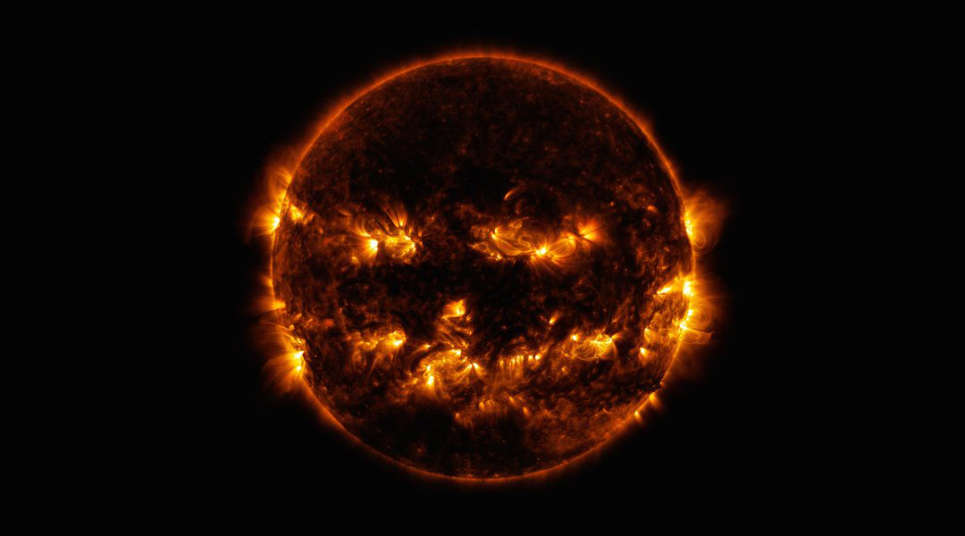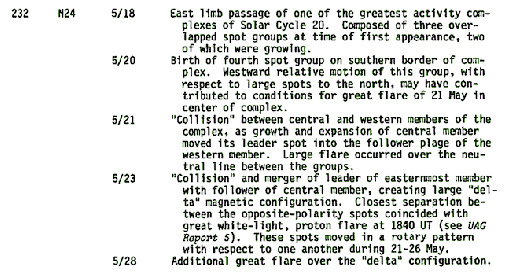That time America almost started World War 3 over space weather

Season 2 of For All Mankind, Apple TV+’s alt-history show about the Cold War space race, opens with a cosmic crisis: A massive solar storm knocks out satellites, threatens astronauts on the Moon, and brings the U.S. and the Soviet Union to the brink of nuclear war.
While this dramatic 1983 space weather event is an invention of the show, the dire military consequences aren’t as far fetched as they sound. In fact, almost two decades earlier, a solar storm really did push humanity one step closer to nuclear annihilation.
‘Solar storm’ is a catch-all term for a space weather event in which the Sun flings dangerous particles and radiation our direction during a period of heightened activity. These cosmic tempests typically start with a solar flare, an eruption of electromagnetic energy that can disrupt radio communications when it washes over the Earth at the speed of light. Solar flares are often followed by a slower moving blob of magnetized plasma known as a coronal mass ejection (CME). When CMEs pass Earth, they can induce geomagnetic storms that cause further radio interference, in addition to potentially harming satellites and, in the most severe cases, inducing currents on the ground that can fry electrical grids. Finally, both solar flares and CMEs can produce waves of dangerous, fast-moving proton radiation that can further damage satellites and harm any people in orbit (or on the Moon).
The solar storm that catches humanity off guard in “Every Little Thing,” the first episode of For All Mankind’s second season, is a beast. A CAPCOM at Mission Control describes the event as “well into S5 territory,” referencing the top of the scale used to classify solar radiation storms. Outside of Earth’s atmosphere these proton showers can wreak havoc on biological tissue, which is why NASA quickly orders all of its astronauts on the Moon into a radiation bunker and directs the crew on SkyLab to move to the most heavily shielded part of the space station.
While NASA worries about the safety of its men and women in space, the U.S. military has a more earthly concern: that the Soviet Union might take advantage of the chaos caused by radio and satellite disruptions to attack the United States.

When Johnson Space Center director Margo Madison tells Major General Nelson Bradford that the Soviets are likely to lose some of their North American satellites due to the storm, he immediately calls up the military’s top brass to recommend the U.S. go to DEFCON 3, a heightened state of combat readiness. When a flabbergasted Madison points out that’s just “two steps away from nuclear war,” Bradford explains that if the Soviets lose their spy satellites, they might worry that the U.S. is going to seize the opportunity to launch a first strike. “And in that case, they might decide to launch their missiles to keep us from destroying them,” he says.
Madison (and presumably most people who value a habitable planet) thinks this military logic is deranged. But Bradford’s concern isn’t totally unwarranted. If the man knows his military history, he may be aware that sixteen years earlier, America almost stumbled its way into a nuclear war because of space weather.
In May of 1967, as the Sun on a rapid rise toward the peak of its 11-year solar cycle, a particularly active region rotated toward Earth. Observers started to notice unusual concentrations of sunspots on May 18, followed by major solar flares and bursts of radio emissions beginning on May 21. On May 23, a series of colossal solar radio bursts and visible light flares were spotted by observatories in New Mexico, Colorado, and Massachusetts. Following these outbursts came a rash of high energy protons “streaming ahead of what was certainly a very energetic CME,” according to a 2016 paper in the journal Space Weather that details the event. Shortly thereafter, on May 25 and 26, Earth was hit by a “violent” geomagnetic storm that caused the northern lights to dance across the sky as far south as New Mexico.

Radio communications systems around the world were disrupted by the solar storm, including three high-latitude radar sites operated by the North American Air Defence Command, or NORAD, a joint U.S.-Canadian effort to coordinate air defenses against the Soviets. These radar sites—in Alaska, Greenland, and England—constituted part of NORAD’s “Ballistic Missile Early Warning System,” which was intended to provide the U.S. and its allies about 15 minutes of warning should the Soviets launch an intercontinental ballistic missile.
Because the U.S. military had never witnessed a solar event of this magnitude before, the sudden loss of its early warning radar was initially interpreted as enemy jamming — a potential act of war. The Air Force scrambled to prepare bomber aircraft to launch. But before the West unleashed a full-out aerial response to the solar storm, space weather forecasters with the Air Force’s Air Weather Service were able to convince the top decision makers at NORAD that the Sun, not the Soviets, was the most likely culprit.
“It is likely,” University of Colorado Boulder space physicist Delores Knipp and her colleagues write in the Space Weather paper, “that the timely information about the space environment, provided first to NORAD...turned a grave situation into a manageable one.”
Indeed, had the U.S. launched those planes, the world might look very different today. As Knipp and her colleagues point out, a full out aircraft launch by the United States and its allies would have been “very provocative” to the Soviet Union, say nothing of the fact that the planes would have been “difficult,” if not impossible, to recall given the ongoing radio challenges.

Instead of leading us down a path toward nuclear armageddon, the 1967 solar storm was a watershed moment for space weather science, prompting the Air Force to vastly expand its nascent space weather monitoring division. “The long-term military impacts of this storm were significant and perhaps unequaled,” the researchers write. “The May 1967 storm(s) brought about sustained changes in the way the U.S. Air Force (and DOD) viewed the space environment, allowing investments in monitoring equipment and forecasting systems that have paralleled, and to some degree provided a foundation for, similar civilian activities.”
The giant solar storm at the outset of For All Mankind’s second season is in some ways a bit fanciful. University of Colorado Boulder solar physicist Tom Berger described widespread satellite blackouts from an S5 storm as “a stretch,” adding that the radiation storm would have to be “orders of magnitude larger than anything we’ve seen so far.” But the response of the U.S. military has eerie echoes of history. While cooler heads ultimately prevail on the show — as they did on Earth in 1967 — in both cases humanity allowed itself to come alarmingly close to a devastating conflict, all because nature did something we weren’t prepared for.
It almost makes you wonder if the reason we haven’t been contacted by aliens yet might be something as mundane as the weather.